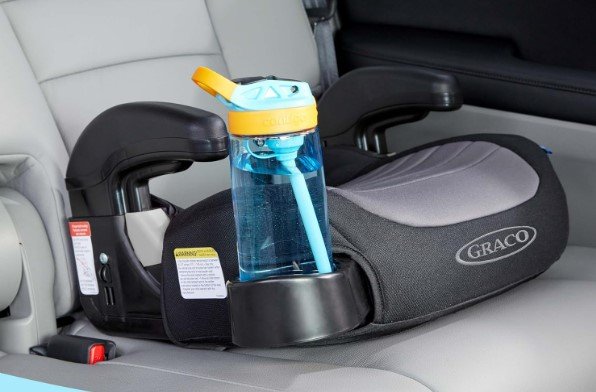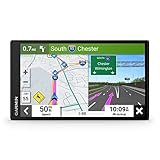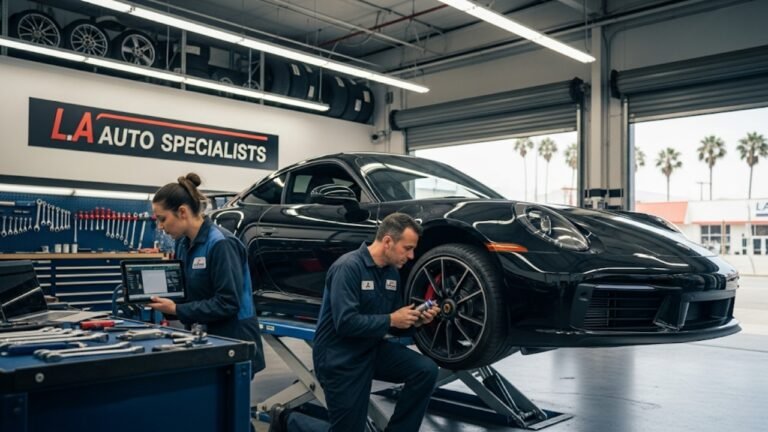Can You Really Tow With an Electric Car?

Not long ago, I found myself on a weekend trip with my family, ready to tow our lightweight camper. Standing beside my sleek electric SUV, a neighbor walked by and said, “Wait, you’re towing that with an EV? Are you sure it can handle it?” That moment summed up the hesitation many still feel about towing with an electric car.
But here’s the thing—electric vehicles (EVs) have come a long way. While towing used to be something only gas-guzzling trucks bragged about, EVs are stepping up. And not just for show. They’re practical, powerful, and surprisingly reliable—if you know what you’re doing.
In this article, I’ll walk you through everything you need to know about towing with an electric car. From real-world experiences to technical tips, we’ll cover the myths, the truths, and how to make the most of your EV without stress.
The Rise of Electric Cars in the Towing World

But things changed fast.
Modern electric cars—especially SUVs and trucks like the Tesla Model X, Rivian R1T, Ford F-150 Lightning, and Kia EV9—come with powerful motors and robust chassis that can compete with traditional diesel or petrol models.
Here’s why EVs are turning heads in the towing scene:
-
Instant torque: Electric motors deliver torque instantly. That means smoother acceleration, even when pulling a load.
-
Low center of gravity: The battery is typically under the floor, giving better stability when towing.
-
Advanced driving aids: Most EVs come with smart features like regenerative braking, lane assist, and trailer sway control.
So yes, towing with an electric car is no longer a niche idea. It’s a growing trend—and for good reason.
Real Talk: What’s It Like to Tow With an EV?
Let’s be honest—it’s not all sunshine and smooth roads. While towing with an electric car can be fantastic, it also comes with some unique quirks.
Battery range drops. A lot. This is the first thing you’ll notice. Even a lightweight trailer can reduce your EV’s range by 30% to 50%. That means more stops, more planning, and a bit more patience.
Here’s a real-life example from my trip:
| Load Type | Range Without Trailer | Range With Trailer | Drop in Range |
|---|---|---|---|
| Empty EV SUV | 300 miles | N/A | N/A |
| Light camper (800 lbs) | 300 miles | 180 miles | -40% |
| Utility trailer (1,500 lbs) | 300 miles | 150 miles | -50% |
Still, the drive itself? Silent. Smooth. Easy. No gear shifts. No loud engine strain. The EV just pulls—and you barely feel it.
But here’s the trick: you need to plan your route and know your limits. Apps like A Better Routeplanner help with charging stations, and knowing when to pull over can save you from range anxiety.
Which EVs Are Good for Towing?
Not all EVs are built to tow. Some don’t even come with a tow hitch option. So before you buy or rent one, check the specs.
Here’s a quick list of popular electric vehicles suitable for towing:
| EV Model | Towing Capacity | Drive Type | Highlights |
|---|---|---|---|
| Tesla Model X | 5,000 lbs | AWD | Great for long trips, smart systems |
| Rivian R1T | 11,000 lbs | AWD | Rugged design, off-road ready |
| Ford F-150 Lightning | 10,000 lbs | AWD | Classic truck feel, huge payload |
| Kia EV9 | 5,000 lbs | AWD | Family-friendly, smooth ride |
| Hyundai Ioniq 5 | 2,300 lbs | AWD | Best for light trailers |
| Volkswagen ID.4 | 2,200 lbs | AWD | Compact yet capable |
Important tip: Always check the Gross Vehicle Weight Rating (GVWR) and Gross Combined Weight Rating (GCWR). It’s not just about what you can tow—it’s about what your EV can handle with passengers, gear, and load.
How Towing Affects EV Battery and Performance
Let’s break this down in simple terms. Towing adds weight. More weight = more work for the battery.
Think of it like carrying a backpack. You walk fine without one, right? Now put 50 lbs on your back. You’ll still walk—but slower, and you’ll get tired faster. It’s the same for EVs.
Here’s what towing affects:
-
Range: Drops significantly.
-
Acceleration: Still quick (thanks to torque), but a bit slower than normal.
-
Braking: Regenerative braking helps, but you’ll still feel the extra weight.
-
Handling: Stable, but tighter turns feel different. Take it slow.
You’ll also need to watch your battery levels closely. I make it a rule to stop for a charge when I’m down to 30%, just to avoid any last-minute surprises.
And remember—charging while towing is tricky. Some chargers are in tight spots or don’t allow for trailers to fit easily. You may need to unhitch your load, which can be a hassle. Plan ahead.
Smart Tips for Towing With an Electric Car
Here’s where experience really helps. I’ve made a few mistakes, but also learned some tricks that make a big difference.
✅ Pack Light
Every pound matters. Leave the “just in case” stuff at home. A lighter trailer means better range.
✅ Use Eco Mode
Most EVs have a setting that limits acceleration and boosts efficiency. Turn it on when towing.
✅ Monitor Tire Pressure
Low pressure = more rolling resistance = less range. Check before every trip.
✅ Pre-plan Charging Stops
Use apps like PlugShare or ABRP. Some even let you filter by towing access.
✅ Drive Slower
65 mph or lower is the sweet spot. It may feel slow, but your battery will thank you.
✅ Keep Regenerative Braking On
It helps recharge the battery on descents and makes braking smoother with a load.
The Emotional Side of It: What It Feels Like
I still remember the first time I towed our pop-up camper with my EV. We were headed to a quiet lakeside park. No engine noise. Just wind, trees, and the occasional bird call. It felt peaceful.
There’s something empowering about knowing you’re doing something sustainable—while still enjoying the freedom of the road. Sure, I had to stop more often. But those stops became part of the journey—picnics at charging stations, chats with curious travelers, and unexpected detours that made the trip even richer.
Yes, towing with an electric car isn’t perfect. But it’s worth it. For the environment. For the experience. And honestly? For the fun of doing something new.
Charging While Towing: What You Need to Know
Charging an EV while towing sounds simple—just plug in, right? Well, not quite.
One major hiccup I ran into during my first towing trip was finding charging stations with enough space. Many fast chargers are tucked into tight parking lots or curbside locations. Pulling in with a trailer? Nearly impossible.
Here’s how to make charging easier when towing:
-
Unhitching strategy: If needed, unhitch your trailer and park it nearby before pulling up to the charger.
-
Look for pull-through chargers: These are often found at RV parks or dedicated charging corridors.
-
Choose charging times wisely: Charging at night or during off-peak hours gives you more space and less stress.
-
Use charging apps smartly: PlugShare, Chargeway, and A Better Routeplanner often list charger layouts. Use filters to find towing-friendly spots.
Also, keep in mind that charging times increase with load. When towing, your EV may take longer to cool the battery and charge efficiently. If you’re fast-charging a lot on a hot day with a trailer attached, consider taking longer breaks or splitting your trip across two days.
Planning a Long-Distance Trip With a Trailer
Planning a long-distance journey with your electric car and trailer can feel like a game of chess. You’re always a few moves ahead, watching your battery level like a hawk, and checking terrain and weather.
Here’s a sample checklist I use before every trip:
-
✅ Route with EV chargers (at least every 100–120 miles)
-
✅ Towing weight cross-checked with EV manual
-
✅ Backup charging locations marked
-
✅ Cooler packed (because waiting ≠ wasted time!)
-
✅ Trailer lights tested
-
✅ Weather forecast checked (rain & wind can drop range)
Elevation matters a lot. Going uphill with a trailer can drain your battery like a faucet left on. But going downhill helps you recover energy with regenerative braking.
And let’s talk wind. A headwind can shave 10–15% off your range. A tailwind, on the other hand, is like nature giving your battery a little kiss of kindness.
Long-distance EV towing requires planning—but with a little patience and practice, it’s incredibly rewarding.
Safety Tips and Legal Considerations
You wouldn’t go hiking in flip-flops, right? The same goes for towing—especially when you’re doing it with an EV.
Safety tips every EV tower should follow:
-
Weight balance: Distribute trailer weight evenly (60% up front).
-
Braking distance: Leave extra room. Even with regenerative braking, your stopping time increases with a load.
-
Trailer brakes: If you’re towing over 1,500 lbs, trailer brakes are a must in many states and countries.
-
Tire checks: Check both the trailer and EV tires for pressure and wear.
Legal must-knows:
| Country/State | Max Towing Limit (Typical) | Braking Requirements | Speed Limits While Towing |
|---|---|---|---|
| USA (varies by state) | 3,000–10,000 lbs | Over 1,500 lbs require trailer brakes | 55–65 mph |
| UK | Based on MAM, usually 85% of kerb weight | Brakes required over 750 kg | 60 mph on motorways |
| EU | Car-specific ratings | Required over 750 kg | 80–100 km/h |
Make sure your tow bar is certified for your vehicle. DIY setups can be dangerous and may void your warranty. And always double-check your insurance covers towing—especially with EVs, where towing-related battery damage can be costly.
Towing With an Electric Car vs Gas Car: Cost Breakdown
Let’s talk numbers. Many people assume towing with an electric car is more expensive due to range issues and extra charging. But is it really?
Here’s a quick cost comparison based on a 500-mile round trip, towing a 2,000 lb trailer:
| Category | Electric Car | Gas Car (20 mpg) |
|---|---|---|
| Energy cost (avg. $0.15/kWh for EV, $3.80/gal for gas) | $45 | $95 |
| Charging time (avg. 2 stops x 30 min) | 1 hour | 0 |
| Total trip time (incl. charging) | ~10 hours | ~9 hours |
| Environmental impact (CO2) | Low | High |
Even with extra charging stops, the electric car costs less to run. And the emissions? Practically zero, especially if your power source is renewable.
Busting Myths About EV Towing
Let’s break down some of the most common myths people still believe:
❌ EVs can’t tow anything
False. Many modern EVs can tow up to 5,000 lbs or more. The Rivian R1T goes up to 11,000 lbs!
❌ You’ll always run out of battery
False. With planning, towing is totally manageable. Range does drop, but tools exist to make it easy.
❌ EVs overheat when towing
Rarely. Most are engineered with thermal management systems to stay cool—even under load.
❌ Charging is impossible with a trailer
False. It’s harder, yes. But not impossible. Plenty of charging stations are trailer-accessible.
FAQs: Quick Answers to Your Common Questions
1. Can all electric cars tow?
No. Many smaller EVs aren’t rated for towing. Always check your vehicle’s manual for tow capacity and restrictions.
2. What happens if I run out of battery while towing?
You’ll need roadside assistance, just like a gas car with an empty tank. Some services now offer mobile chargers for EVs.
3. How much range do I lose while towing?
Typically 30% to 50%, depending on trailer weight, terrain, speed, and weather.
4. Do I need special trailer brakes for EVs?
If the trailer is over 1,500 lbs (or local limit), yes. Most jurisdictions legally require trailer brakes.
5. Are there EVs made specifically for towing?
Yes. The Rivian R1T, Ford F-150 Lightning, and upcoming Tesla Cybertruck are all designed with towing in mind.
6. Is regenerative braking safe when towing?
Absolutely. It can even help extend range and reduce brake wear, though it may feel different with heavy loads.
7. Do I need special insurance for towing with an EV?
Possibly. It depends on your provider. Always disclose towing plans to ensure coverage.
8. Can I tow off-road with an electric car?
Yes—but only if your EV is built for it. Vehicles like the Rivian or Hummer EV are equipped for rugged terrain.
Final Thoughts: Is Towing With an Electric Car Worth It?
Let me end this with a truth that took me a few road trips to fully embrace:
Towing with an electric car isn’t perfect—but it’s powerful, peaceful, and surprisingly practical.
You’ll need to plan more, charge more, and think ahead. But you’ll also enjoy smoother rides, lower costs, and the joy of silent adventure.
There’s a learning curve, sure. But if you’re someone who loves the road, wants to reduce your carbon footprint, and enjoys a challenge—this is your next great driving chapter.
So next time someone asks if your EV can tow, smile and say: “Not only can it, it does—and it does it well.”






